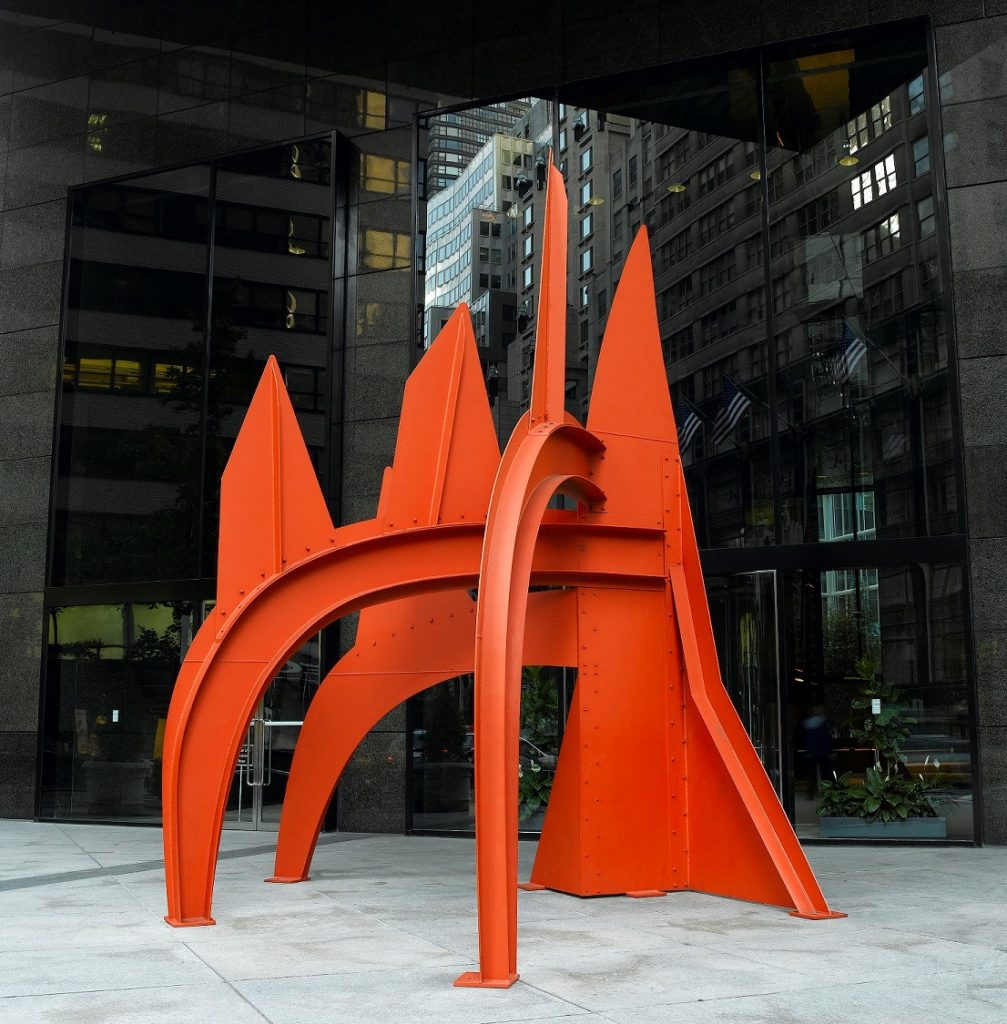Art & Exhibitions
The Seagram Building Is Down One Picasso, Up Three Calders


Sarah Cascone

It’s like the old saying (kind of): when one artwork leaves, another one enters. Such is the case at New York’s Seagram Building, formerly home to Le Tricorne in the Four Seasons Restaurant’s famed Picasso Alley, and now preparing to host a trio of Alexander Calder sculptures on its Park Avenue plaza.
The exhibition will be on view outside the iconic Ludwig Mies van der Rohe-designed building from October 5 to November 10, reports the New York Times. It is organized by Pace Gallery in collaboration with the Calder Foundation on the occasion of the annual gala for the Storm King Art Center just north of New York City. Held on October 8, this year’s event honors the Calder Foundation and its president of 27 years, Alexander S.C. Rower (Calder’s grandson). For more than 25 years, Storm King has displayed the artist’s monumental work in its sculpture park.
The three works headed to the Seagram Building include two stabiles and one standing mobile: 3 Flèches Blanches (1965), an abstract black and white mobile making its public New York debut; the recently conserved stabile Angulaire (1974); and the over 18-foot-tall bright red stabile Saurien (1975).
Presenting these works in a public setting is directly in keeping with the artist’s vision for his work. “My mobiles and stabiles must be put in open spaces, like city squares, or in front of modern buildings. And the same goes for all contemporary sculpture,” Calder once said. “A sculpture in the city must be useful as signaling poles placed in sea lanes and waterways with their red discs, yellow squares, and black triangles. It must be designed as a real urban signal as well as sculpture.”
The Seagram Building is no stranger to the famed sculptor, as a permanent Calder was originally planned for the plaza, but proved too costly. In 2007, Calder’s monumental mobile Ordinary (1969) spent a year at 375 Park Avenue, also thanks to Pace. The gallery organized similar presentations of the artist’s work at 590 Madison avenue in 1995 and 2004, in London for the 2012 Olympic Games, and at Sudeley Castle and Gardens, Gloucestershire, last year. Luckily Seagram Building landlord Aby Rosen, who proved to be not so fond of the ousted Picasso, seems to be a Calder fan.